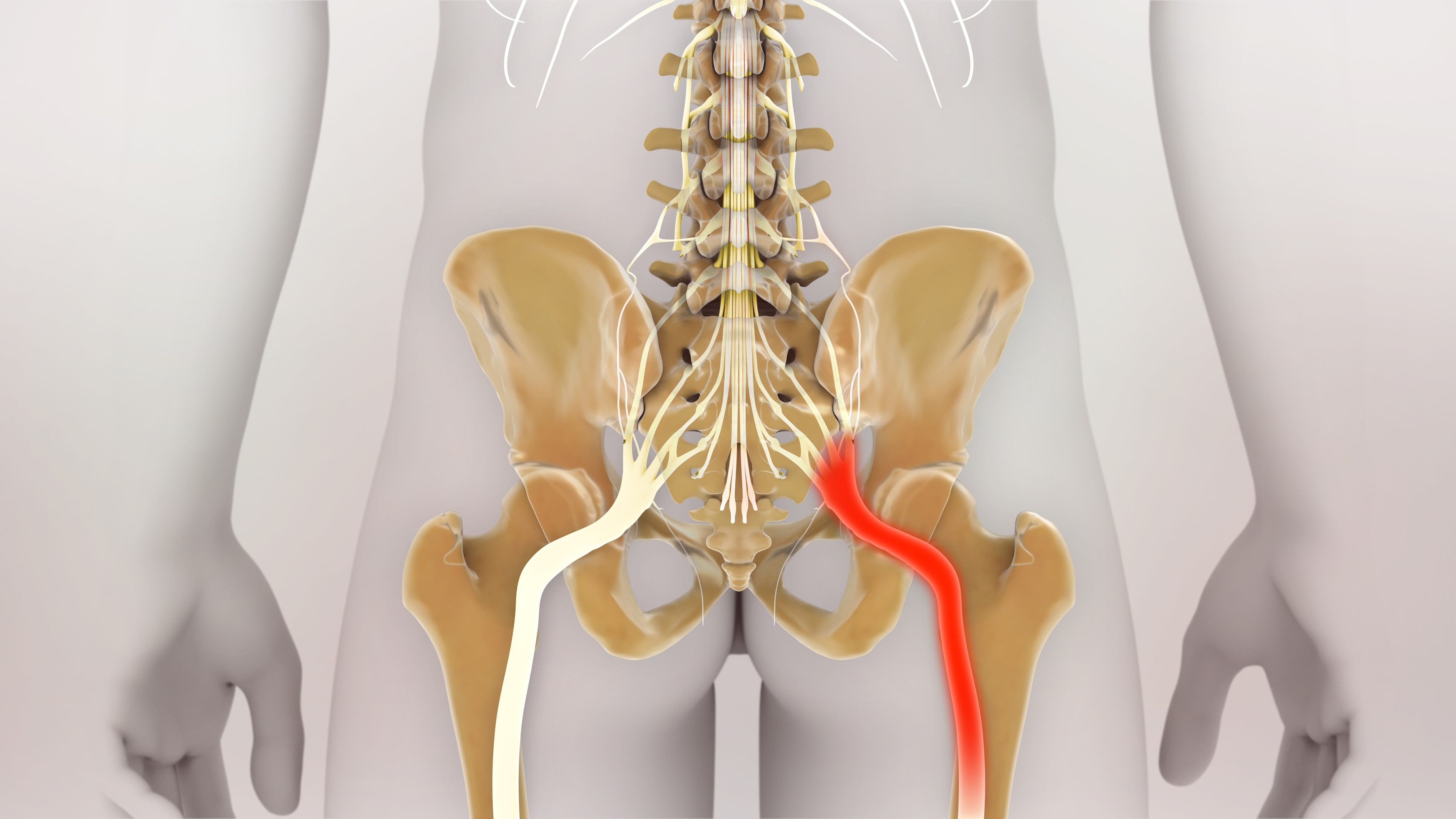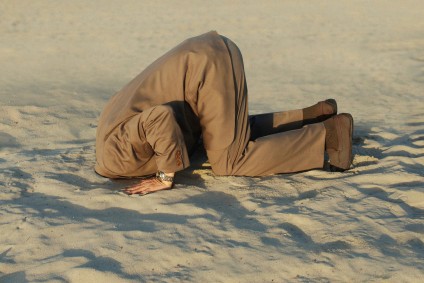6 things you should know about rotator cuff tears
Jun 9, 2015
At some time in your life, either you, a family member or a friend will complain about the crippling effects of shoulder pain.
Although there are many ‘things’ in the shoulder that can cause pain, the most common injury in the shoulder is a rotator cuff tear. The pain can be disruptive to your life, can last a long time and treatment can get very expensive. Let alone if you need surgery to help fix the problem.
In this article, we are going to discuss the 6 things you must know about rotator cuff tears and how to keep your shoulders healthy.
1. The rotator cuff is important!
The rotator cuff is a group of 4 muscles and their tendons that run from your shoulder blade and connect to your arm bone. The connection of your shoulder blade and arm bone is a ball and socket joint. The shapes of these bones when together resemble a golf ball balancing on a golf tee, as shown below.
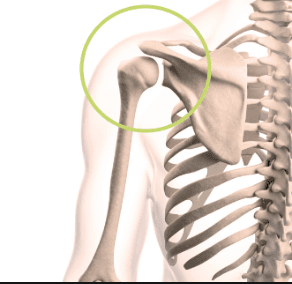
One of the main functions of the rotator cuff is to help balance the golf ball (the head of the humerus) on the tee (the socket part of the shoulder blade), in order for your shoulder to be able to move.Therefore, if the rotator cuff is torn or partly torn, this can significantly affect your ability to move your arm. That is why it is so important!
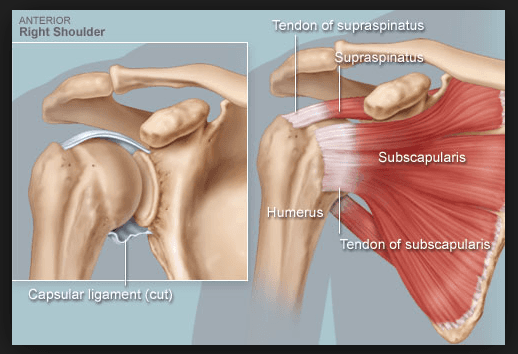
Above: image of the rotator cuff muscles and tendons around the shoulder
2. The referred pain phenomenon
Have you ever had pain down the upper side of your arm? And as much as you poke and prod it, you just can’t seem to pin point where the pain is coming from? Welcome to the phenomenon of referred pain.
Torn rotator cuff tendons can cause pain deep in the shoulder, around the shoulder or refer down the upper side of the arm. Unfortunately no amount of poking through the side of your arm will lead you to the source of the pain. Just be aware of this, in case it ever happens to you!
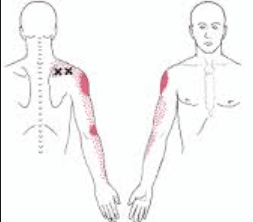
Above: the red markings show the ‘referred’ pain you may feel
3. A direct cause and effect
If you have a torn rotator cuff, you can pinpoint exactly what movements cause pain and feel weak. Common painful and weak movements include:
lifting
overhead activities such as hanging out the clothes
tucking your shirt in as you reach behind your back, and for ladies doing your bra up behind your back
combing your hair
playing tennis
swimming
4. Chances are your shoulders are going to wear out through life!
Rotator cuff tendons are so commonly torn and this is in part due to the limited blood supply of the tendon. It is estimated by the age of 50, 60-70% of people will have a tear shown on ultrasound.
The tear can either happen:
in a single traumatic episode, such as falling onto an outstretched arm.
over time due to repetitive microtrauma.
Let’s look at (b) more closely as it is the most common way people end up with a cuff tear, as it is a normal part of ageing.
Your rotator cuff tendons pass through a small space, called the subacromial space. In a normal shoulder, as you reach your arm overhead there is enough room for your tendons and bursa to pass through this space.
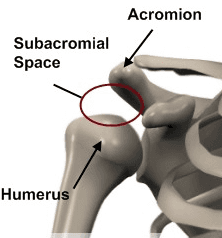
However, with various muscle imbalances, what happens when you reach your arm overhead, is that the tendons and bursa get squashed in this space. As they keep getting squashed, initially micro damage to the tendons occur (which typically happens through your 20’s and 30’s) until eventually the tendons get so worn out that they start to tear (which starts to happen in your 50’s), initially with smaller tears and overtime ultimately with larger tears.
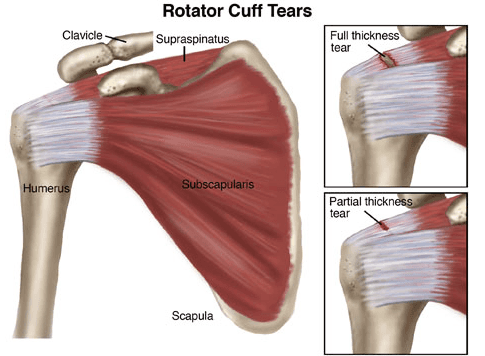
5. Get the right advice
If you start to experience shoulder pain, make sure you see either a:
physiotherapist with experience in sports injuries
GP with an interest in musculoskeletal medicine
Sports Physician
Orthopaedic surgeon
Either of these professionals will perform a physical examination to diagnose the problems with your shoulder. They may suggest you get some imaging done to provide further information. Options include:
an X-ray – you will most likely need this to asses the integrity and shape of your bones
MRI – this is the gold standard and can give you a lot of useful information, but can be expensive
an ultrasound – beware!! not all ultrasound tests are created equally!
A little more information on ultrasounds
Ultrasounds are cheap, non-invasive, quick and free of radiation. However, test results are highly dependant on the person performing them and are notoriously difficult to interpret. Your results may significantly over or under report the damage that is there.
The chances are if we were to repeat the ultrasound on your good, pain-free shoulder, you may have just as many problems on the report for that shoulder. This is because tests can report degeneration and damage but they can’t report where your pain is coming from. Wear and tear is normal. You need a good team of health professionals to interpret any tests you have.
To make the most out of your ultrasound, make sure you are referred to a radiologist who specializes in reporting on the shoulder (there are only a handful in Sydney, so ask us if you ever need a recommendation).
6. You need to keep your shoulder muscles healthy… starting from today!
By coming to Physiotonic classes, we are helping you create a habit of good posture. Research has shown poor posture where the spine is hunched forwards, the shoulders are rounded and the neck pokes out, is linked to shoulder problems. In this poor posture, the muscles at the front of the shoulder such as your pec muscles become very tight and overactive. Meanwhile the muscles at the back of the shoulder become weak.
This simple muscle imbalance exacerbates shoulder problems. So to manage and prevent shoulder and rotator cuff problems, through Physiotonic we get you to:
activate the muscles at the back of your shoulder to help you improve your shoulder posture (which is the shoulder blade setting we talk about during class)
continue to work on your deep core activation to help with your overall posture.
Some tips to incorporate in your exercise routine include:
do less pushing exercises involving your shoulders such as bench press and chest press
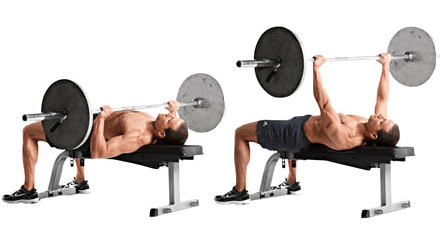
do more pulling exercises such as pull downs with the cables, horizontal pulls and bent over reverse flies.

However, if you are experiencing shoulder pain, you really do need to get yourself to a good sports physio to ensure you are engaging the right muscles, as it is very easy to get it wrong.
In summary, your rotator cuff tendons are important to your shoulder. They are commonly injured, so you need to look after them. Don’t carry a world of pain on your shoulders. It is better to be proactive and do the right exercises for your shoulders, from today.
Check out more:

